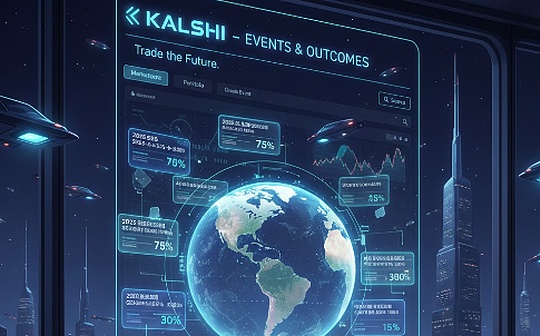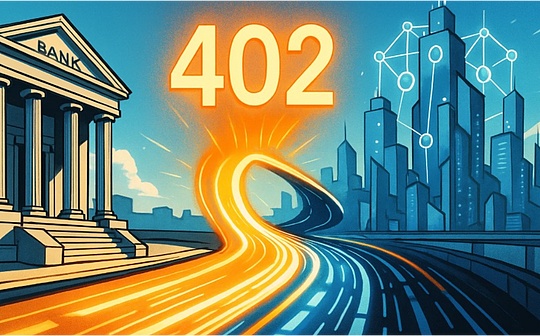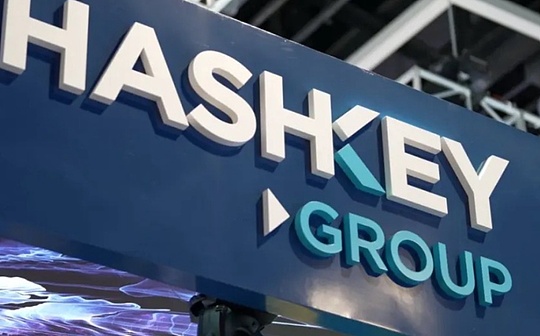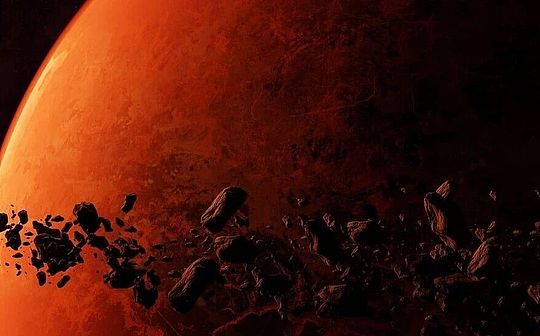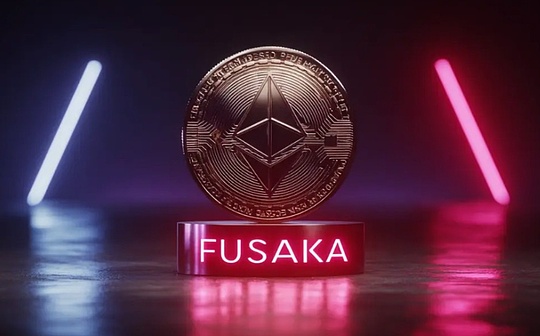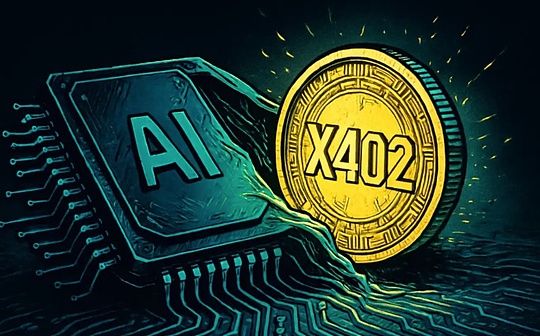
Author: YBB Capital Researcher AC-Core; Compilation: 0xjs@作 作 作 作 作
TLDR:
-
Due to the lack of unified standards, the architecture and consensus mechanism of different blockchains are different, and the cross -chain asset transfer process is complex and costs high.The existing third -party bridge is facing trust and security challenges. The centralized bridge needs to maintain liquidity and pass the cost to users.One -click hair chain is similar to solving the dilemma and dilemma, which is a compromise solution for the asset bridge.
-
The market maturity is based on OP Stack and Superchain first, and Base is a model of success.Agglayer is native to Ethereum, which is easier to be accepted, but it is necessary to ensure the safety and reliability of the aggregation process.Elastic Chain’s success depends on the development of ZKSYNC. In the short term, OP is optimistic about ZK.
-
In the context of lack of industry innovation, DEFI is still the main application scenario of Rollups.At present, the DEPIN, RWA and large GameFi projects are less likely to appear on Rollups, while the SocialFi and NFT markets may occur, but the market heat is still uncertain.The blockchain overall shows the Matthew effect, and the trend of ROLLUPS unlimited issuance deserves long -term attention to the head and pay attention to the middle and lower layers in the short term.
1. Connect to the island chain: the problem of the bridge
When transferring assets cross -chain, each blockchain has a unique structure, consensus mechanism, status certificate and status conversion, lack of unified standards and interoperability, resulting in complex cross -chain communication and data exchange.These verification processes are usually too expensive and cannot be executed on the chain.This limit has led to the surge in the signature committee of multiple parties to verify the status of other chains.Therefore, no universal decentralized standards or protocols can realize the interoperability between all blockchain, which limits the free flow of assets between different blockchain.
In order to realize the transfer of cross -chain assets, many third -party bridges have appeared, but these bridges are facing major network security challenges related to trust issues.Even though the centralized bridge connection can ensure that it is completely safe, they still need to maintain sufficient liquidity on each integrated chain, thereby passing these operating costs to users.At present, the difficulty of trusting the trust of the native decentralized asset bridge and the third -party bridge connection make ZKSYNC, Polygon, and Optimism have launched more native solutions, such as Elastic Chain, Agglayer, and Superchain Explainer to achieve localized multi -chain multi -chain.Extension.
2. ZKSYNC3.0: Elastic Chain
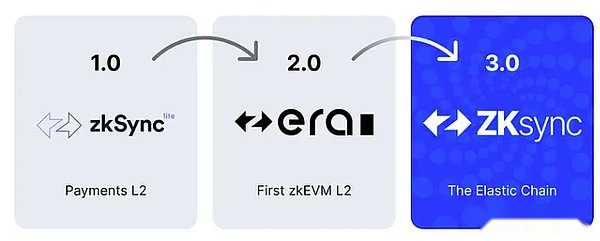
Image source: zksync.mirror
In 2023, the main development company behind ZKSYNC Matter Labs released ZK Stack, which is a toolkit that allows developers to build their own blockchain based on ZKSYNC technology.In essence, these custom chains will transform ZKSYNC 3.0 from a single Ethereum L2 to Elastic Chain through the Elastic Chain connection.
The core upgrade of the ZKSYNC 3.0 protocol was released on June 7, 2024, which is the most complicated upgrade of ZKSYNC so far.It re -configures the ZKSYNC L1 bridge to a shared router contract to support the expanding interoperable ZK chain network.The ZK STACK framework realizes the interoperability of nativeness, trust, and low -cost interoperability.
Matter Labs said that “Elastic Chain is an unlimited expansion network composed of ZK Chain (ROLLUPS, Validiums, and Volitions). It ensures its security through mathematical verification methods and achieve seamless interoperability under a unified and intuitive user experience.It aims to make the interoperability in the ZKSYNC ecosystem more smooth and efficient. “
2.1 Elastic Chain architecture
Elastic Chain does not rely entirely on ZK technology, nor can it simply add ZK to other non -ZK multi -chain systems to prove “patch”.In general, its network is implemented through three components: ZK Router, ZK Gateway and ZK Chains.
1. ZK Router:
-
Core routing mechanism: ZK Router is the main routing component of the ZKSYNC 3.0 architecture. It is responsible for managing and coordinating communication and data transmission between different chains and nodes in the network.
-
Cross -chain communication: With efficient cross -chain communication protocols, ZK Router can ensure fast and secure data transmission between different chains and enhance the interoperability and performance of the overall network.
2. ZK Gateway:
-
Entry and exit nodes: ZK Gateway, as the entrance and export node of the ZKSYNC 3.0 network, handle the interaction between the external blockchain (such as the main network of Ethereum) and the ZKSYNC network.
-
Asset bridge connection: Responsible for the asset bridge connection and transfer between the external blockchain and the ZKSYNC network to ensure the safety and efficient flow of assets between different chains.
-
Transaction aggregation: The user transaction aggregates into a batch, and then a zero -knowledge certificate is generated, submitted to the external blockchain for verification, and reducing the data load and transaction costs on the chain.
-
Middleware: It can be understood as the middleware deployed between Ethereum and ZK Chains to achieve comprehensive interoperability between ZK Chains.
3. ZK Chains:By generating and verifying zero -knowledge proof to ensure the effectiveness and security of the transaction, the results are submitted to ZK Router for rollup and coordination.They are interacted with L1 smart contracts through ZK Gateway, completely independent and customized, and are built with ZK Stack.
According to ZKSYNC, Gateway is the key component of Elastic Chain, which realizes the seamless settlement of ZK Chains to Ethereum.Through Gateway to submit certifications and data to Ethereum, the following advantages can be achieved:
-
Cross -batch and cross -chain certification synthesis: Reduce the cost of L1 verification.
-
Status incremental compression: compressed small batch data sent to the gateway, and effectively forward it to L1 in large quantities.
-
Fast ultimateness: verification chain to prove and prevent low -delayed cross -chain bridge conflicts, and enhance through the pledge of a large number of verifications.The Z K chain does not need to trust other chains.
-
Activity: The activity of each ZK chain is independently managed by the verification person; the gateway does not affect its activity.The chain can leave the gateway freely.
-
Anti -review: Cross -chain mandatory transactions will be cheaper than conventional L1 anti -review transactions, making it easier for all users to use.
ZK Chains does not need to use the ZK gateway, and can settle directly to Ethereum. Free choice to leave the ZK gateway network without affecting the security of its chain.They can switch between using the ZK gateway and direct settlement to Ethereum.The ZK gateway will be operated by decentralized and decentralized, no trustworthy verifications to ensure network elasticity and reliability.Participating in this decentralized verification process requires ERC20 tokens.ZKSYNC network governance will specify a token (probably ZK token) for this purpose.
Verifications will charge the cost of the bridge and the status incremental data published by the ZK gateway.This inspires the verifications to join the ZK gateway, because their income can double with the value of transactions on the chain.In addition, due to the rejuvenation service provided by the verifications, the settlement data of the ZK gateway will be cheaper than settlement directly on the Ethereum network, which may be why most ZK chains may choose to join.
3. Polygon 2.0: Agglayer
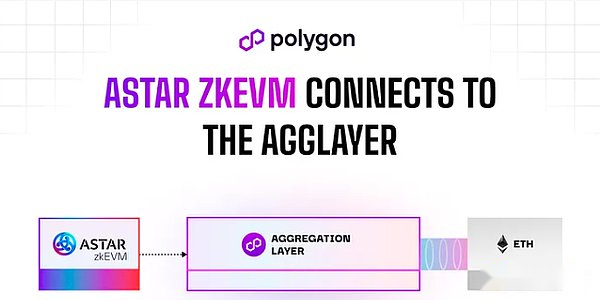
Image source: Polygon Agglayer
3.1 Origin of Agglayer design
Similar to OP Stack and ZK Stack, the blockchain created using Polygon CDK can be directly integrated into Agglayer, using its unified bridge and security services to achieve interoperability with other blockchain.This constitutes the core architecture of Polygon 2.0.
Agglayer’s core idea comes from the design of shared value sequencing design proposed by Umbra Research.The design aims to achieve the atomic cross -chain interoperability between multiple Optimistic Rollup.By using a shared sorter, the system can uniformly handle the transaction sorting and status roots of multiple ROLLUP to ensure atomic and conditional execution.
In order to achieve this, the following three elements are needed:
-
Share sorter: Receive and process cross -chain transaction requests.
-
Block construction algorithm: shared sorters are responsible for building blocks containing cross -chain operations and ensuring their atomicity.
-
Share fraud proof: Implement the shared fraud certification mechanism between related ROLLUP to perform cross -chain operations.
Since the existing Rollups already have the ability to transmit a two -way message transmission between Layer 1 and Layer 2, Umbra only adds one MintburnSystemContract (Burn and Mint) to supplement these three components.
Working process:
-
Burn operation on the chain A: can be called by any contract or external account, and is recorded in Burntree after success.
-
Mint operation on Chain B: After being successfully executed by Sequencer, it is recorded in Minttree.
Uncosty and consistency:
-
Merkle ROOTS Consistency: Burntree on Chain A and Minttree on Chain B must be exactly the same to ensure the consistency and atomicity of cross -chain operations.
System operation:
-
The shared sorter is responsible for publishing the trading batch and statement of the two Rollups to Ethereum.It can be centralized or decentralized (such as Metis).Sortors receive transactions and build blocks for Rollup A and B.If the transaction on A is successful with the MintburnSystemContract, it will try to perform the corresponding MINT transaction on B.If Mint transactions are successful, it also includes Burn transactions on A and MINT transactions on B; if it fails, it will exclude these two transactions.
3.2 Agglayer core component:
In the AggLayer of Polygon 2.0, Unified Bridge and PESSIMISTIC Proofs are its core components.
1. Unified Bridge
Technical framework:
-
Cross -chain communication: The core of the Unify Bridge is to achieve seamless communication between different chains, and the data and asset transfer between different Layer2 solutions and Ethereum main network through cross -chain communication protocols.
-
Liquidity aggregation: The bridge aggregates liquidity from different Layer2 solutions, allowing users to freely transfer assets between chains without having to worry about liquidity fragmentation.
Implement logic:
-
Message transmission: Unify Bridge realizes cross -chain communication through the message transmission mechanism. The message contains relevant transaction information and passes through the chain through the bridge protocol.
-
Asset locks and release: When the user locks assets on a chain, Unified Bridge releases equal -value assets on the target chain.This process uses smart contracts to ensure security and transparency.
-
Interoperability protocol: In order to ensure the interoperability between different chains, Unified Bridge uses standardized interoperability protocols.These agreements define how to deal with cross -chain transactions, verify transactions effectiveness, and solve potential conflicts.
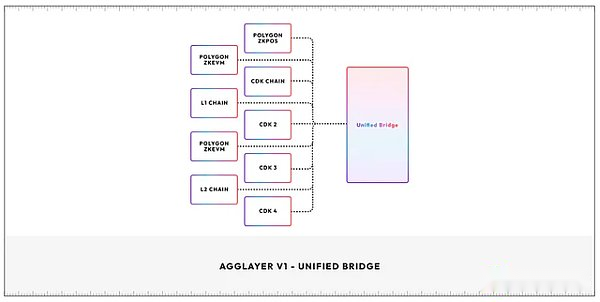
Data source: Aggregated blockchains: a new thesis
2. Pessimistic Proofs
Technical framework:
-
Security: Pessimism proof is a security measure aimed at preventing fraud transactions.It introduces additional verification steps during transaction verification to ensure that all transactions are effective.
-
Delay verification: Different from optimistic proofs, pessimistic proof assumes that transactions may be malicious, and comprehensive verification before confirmation.
Implement logic:
-
Preliminary verification: After the transaction is submitted, the system is immediately verified, including checking the basic information of the transaction and the effectiveness of the signature.
-
In -depth verification: After preliminary verification, the transaction enters the in -depth verification stage, and the system calls a series of smart contracts to check the complexity and potential risks of the transaction.
-
Dispute solution: If any problems are found during the verification process, the system will trigger the dispute resolution mechanism.This allows users and verifications to submit additional proofs to resolve disputes and ensure the ultimate effectiveness of the transaction.
Agglayer provides a highly secure, scalable and interoperable blockchain environment by integrating the Unified Bridge and PESSIMISTIC Proofs.These components not only enhance the security of the system, but also simplify cross -chain transactions, allowing users to cross the chain more easily.For more details, please refer to YBB Capital’s previous article “From modularization to aggregation: exploring the Agglayer core of Polygon 2.0”.
4. Optimism: Superchain interpreter
In 2023, Optimism took the lead in opening a one -button cloth chain. Its initial project was OP Stack, which established standards for the unified network.OP Stack is the launching platform of the Ethereum expansion solution Optimism Superchain. It is also a hub for interaction and transactions between all L2 built by OP Stack.
Optimism Superchain shared universal OP Stack development stacks, bridges, communication layers and security to ensure that each chain can be coordinated and run as a unit.This structure can be divided into five different layers. Each layer has its specific purpose and function:
-
Data availability layer: The main source of the original input of the OP stack determining the chain is mainly through the Ethereum DA.
-
Sorting layer: control how to collect and forward user transactions is usually managed by a single sorter.
-
Derivative layer: processing the original data into the input of the execution layer, mainly using RollUP technology.
-
Execution layer: Define the system’s state structure and conversion function, with the Ethereum virtual machine (EVM) as the center module.
-
Settlement layer: Allows the external blockchain to view the effective state of the OP Stack chain through proven fault verification.
Compared with Elastic Chain and Agglayer, Optimism Superchain entered the market earlier and occupied a considerable share.It is worth noting that based on its launch, it accounts for a large part of the daily GAS expenditure and reflects its higher chain activity.
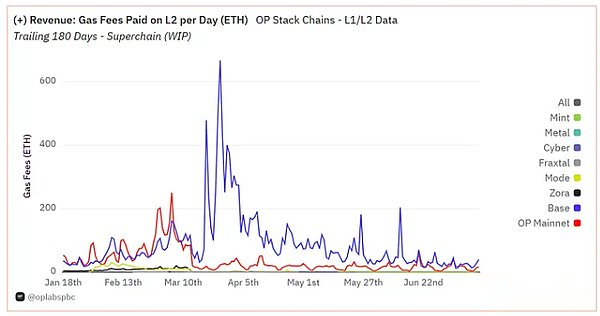
Source: Dune Optimisms – Data on the Superchain Chain
5. Subjective ideas about the one -click hair chain
5.1 Agglayer, Superchain, Elastic Chain competition analysis
(This part of the content only represents the author’s personal point of view.)
The above three expansion schemes continue the narrative of their respective Rollup capacity. From the perspective of market maturity, OP Stack and Superchain took the lead in occupying the market, and Base was the most successful representative.
Agglayer has an advantage in native compatibility, and can directly operate on the existing Ethereum network without a major modification of the underlying protocol.This makes it easier to be accepted by existing Ethereum users and developers.The challenge is to ensure the safety and reliability of the aggregation process.
The preliminary judgment of Elastic Chain is to see the development of ZKSYNC ecology and community construction. If ZKSYNC cannot develop itself, Elastic Chain may face challenges in attracting developers and maintaining community enthusiasm. From the perspective of market and technology, it is optimistic about in the short termOP, long -term optimistic about ZK.
However, the inherent problem of these three solutions is the characteristics of ROLLUP relative to.Recently, Rollup -based expansion solutions have become potential competitors.It directly transferred the sorter to L1, that is, Ethereum itself, thereby eliminating the needs of additional sorters or complex verification steps of L2.Although there are some potential MEV problems, this more native expansion method is worthy of attention to prepare for future development.
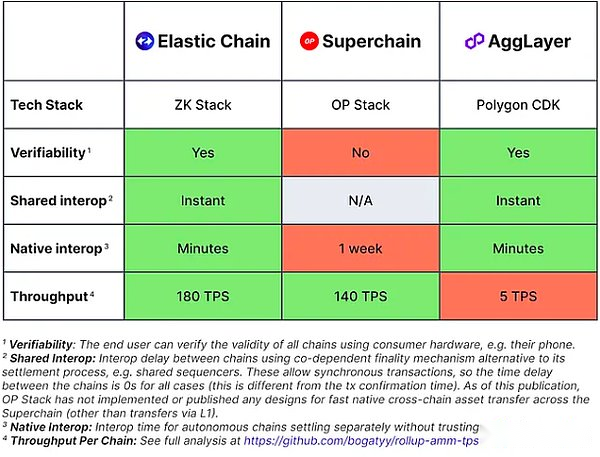
Source: ZKSYNC -Introduction to Elastic Chain
5.2 The future trend and application innovation of rollup
In general, with the promotion of the “one -click hair chain”, the number of Rollup as the main expansion scheme of Ethereum will continue to increase.Even in 2023 Bitcoin’s ecological prosperity, its non -native expansion has borrowed many concepts of expansion of Ethereum.In the case of limited market innovation, Rollup application innovation and impact may be limited.
For each VM chain, regardless of the market changes, TVL is a key indicator, so the earliest application may be various DEFI protocols.In addition, the SocialFi protocol and the NFT trading market may appear.
In other areas, DEPIN may develop hard on Rollup and L1, and leaders may appear on Solana.The concept of RWA is more likely to develop on L1, and insufficient confidence on ROLLUP.GameFi will also rise, but there is only a chance to have large games on Rollup with GameFi as the core.Therefore, the most certain application is related to DEFI.
However, the Matthew effect of the blockchain industry is obvious. With the advent of the multi -chain era, resources will be concentrated in the head project, the strong is Hengqiang, and the weak will be eliminated.


